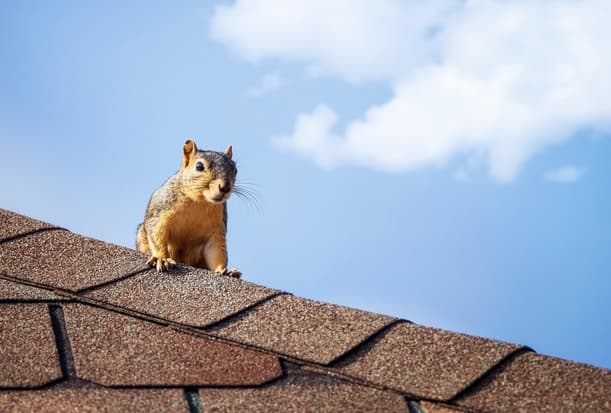Imagine that you’re having a nice evening at home and it’s quiet. Suddenly, you hear the sound of tiny feet moving above your head. It’s not a ghost; it’s probably mice making a home in your attic. A squirrel squatter can be a bother because they can damage your property and make you lose your peace. This guide will show you how to keep these unwanted guests out of your attic and get back to your home.
Getting to Know the Attraction
Before we talk about how to keep squirrels out of your attic, it’s important to know why they find it so appealing. There are several things that make them attractive:
- Shelter: Squirrels can stay safe and out of the weather in attics, which are protected places.
- Nesting: Squirrel females often pick attics as the best place to have babies and raise them.
Squirrels like to store their winter food caches in attics because it’s easy for them to get to. These caches are usually made of nuts and seeds.
These reasons show why squirrels might get into your attic, but they also show how hard it is for people to keep them out. Because squirrels are smart and determined, it’s important to keep your attic safe.
What Happens When Squirrels Move In
Not only is having rats in your attic an annoyance, but it can also cause a number of problems:
Noise Disturbances: Squirrels are very busy during the day, and their movements can make noise, such as scurrying, scratching, and vocalizations, which can make you lose your peace.
Squirrels damage property because they need to chew all the time to keep their teeth healthy. This can cause lines to become frayed, insulation to become damaged, and even structural problems that can be dangerous and cost a lot to fix.
Health Issues: Having a lot of squirrels in your home can cause health issues. These mice may spread diseases like leptospirosis and salmonellosis, and their waste can make the attic dirty.
How to Keep Your Attic Safe
Now that you know the risks of squirrel squatters, let’s look at some good ways to keep your attic safe:
Find Entry Points: The first thing you need to do is figure out how the squirrels are getting into your attic. Check your roof, soffits, vents, and any other places they could get in.
Seal Access Points: Once you’ve found these entry points, make sure they are well sealed. Gaps, cracks, and holes need extra attention to make sure they don’t let air in.
Place one-way exclusion devices in your attic. These devices let squirrels leave but not come back. They are very important for gentle removal.
Do Not Use Poisons: It is cruel to kill squirrels with poison, and the dead animals could end up in your attic, causing bad smells.
Watch for Activity: For a few days, keep a close eye on your attic to make sure all the squirrels have left. Once you’re sure the attic is empty, close it up fully.
To stop future infestations, cut back tree branches that make it easy for squirrels to get to your roof, fix any holes they could use to get in and think about putting a chimney cap on your chimney to keep them from coming back.
These steps will help keep squirrels out of your attic, but remember that squirrels can be hard to get rid of, and do-it-yourself methods might not always work. In this case, hiring professional pest control services is the safest and most effective thing to do.
Finally, it’s important to keep your attic area safe from people you don’t want there, like squatters and protective measures. If you know what squirrels like, what could go wrong, and how to protect your attic, you can get back into your home and enjoy a peaceful living place without squirrels.
Technicians at Squirrel Control Bolton use the best materials to protect your property against squirrel break-ins. They will use thick galvanized steel mesh and heavy gauge flashing, and we know to provide people with custom solutions unique to your case. We can squirrel-proof roof vents, gable vents, drip edges, soffits, ridge vents, wall vents, chimneys and more.
